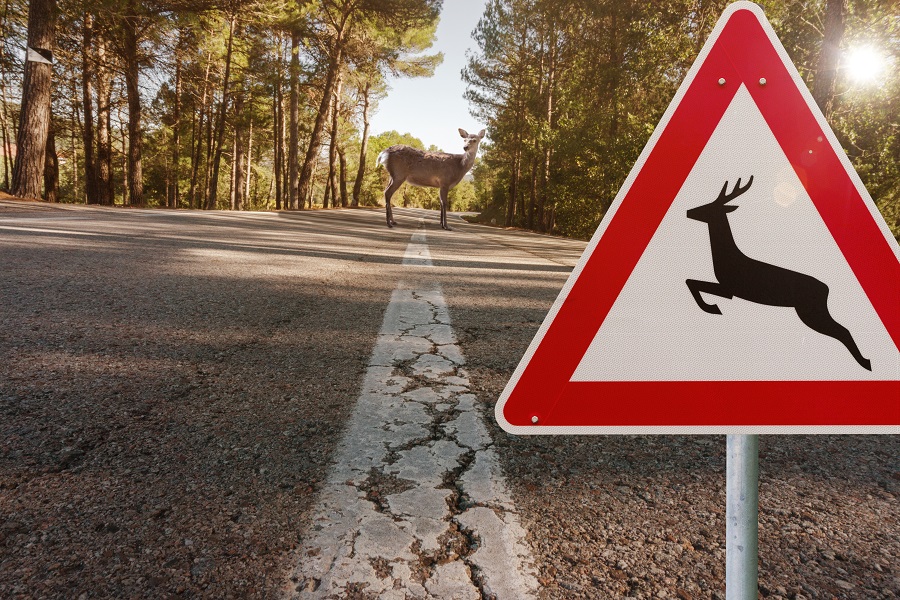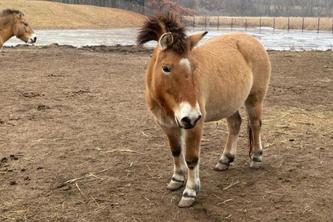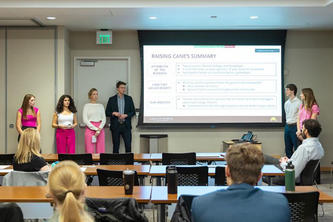
On the first Sunday of November each year in the United States, clocks “fall back” one hour with the end of daylight saving time, ushering in the shorter, darker days of the winter months. This adjustment has serious implications beyond the loss of sunlight: research has shown that the end of daylight saving time brings a 16% rise in vehicle and deer collisions in the week following.
Raphael Stern, a scholar in the Center for Transportation Studies and assistant professor in the College of Science and Engineering, and Ron Moen, a wildlife biologist at the Natural Resources Research Institute (NRRI) and an associate professor in UMD's Swenson College of Science and Engineering, discuss how deer collisions affect Minnesota drivers and how we can all stay safer as the seasons change.
Q: How do deer collisions affect Minnesota drivers?
Stern: Deer-vehicle collisions (DVCs) pose a significant risk for Minnesota drivers. While most DVCs only cause property damage, collisions can cause an injury or, even worse, a fatality. In total, roughly 1,300 DVCs are reported to the Minnesota Department of Public Safety each year, but our data — and data from insurance claims — suggests the true number of DVCs in Minnesota is at least 10 times higher, and maybe up to 20 times higher.
Moen: The total effect of collisions on drivers is complex. There is, of course, the cost of time and money for repairs to the vehicle after a collision, but — particularly when injuries or fatalities happen — there is a significant emotional cost on top of the financial.
Q: Are there factors that contribute to the rise in deer collisions with the end daylight saving time?
Stern: The rise in DVCs observed at the end of daylight saving time is likely a combination of three main factors. Deer are particularly active in the fall, and additionally more active around dusk and dawn. When we end daylight saving time, the peak commute hour coincides with dusk, which means there are a lot of people driving right at the time that there are a lot of active deer. This is a particularly dangerous combination.
Q: What steps can drivers take to avoid deer collisions?
Stern: The main factor seems to be driver speed. If you slow down, particularly in areas where you commonly see deer — such as close to parks, forests or golf courses — you’ll have more time to react if you see a deer, and therefore more time to avoid hitting the deer.
Moen: The other most important behavior for drivers is to maintain awareness of your surroundings. You should consciously watch for deer as you’re driving, and if you see a deer, anticipate that it could move into the roadway. Especially if you see a deer cross the road — be aware that there may be another deer following it.
Q: If a collision happens, what should drivers do?
Moen: Turn on your flashers, check for traffic in all directions and get out of the car to evaluate the damage only when it is safe to do so. If there are injuries involved, call 911. In Minnesota, drivers are required to report any crashes that involve injury or death of a person, or cause more than $1,000 in damage.
Depending on the road type, consider pulling the deer off of the roadway or at least alert police if there is a dead deer in a traffic lane. This is so the deer doesn’t cause a secondary collision, but again, you would need to be careful doing this on a controlled access highway like an interstate or a high-volume traffic road.
Q: What type of work are you doing at the U of M to improve knowledge on deer collisions?
Stern: We’ve been working with the Minnesota Department of Transportation (MnDOT) gathering data on all the DVCs that were reported in the past 20 years to predict roadway corridors and specific sections of those corridors that are particularly risky for DVCs. This provides insight into what factors — such as adjacent land use and speed limit — along with other roadway characteristics are particularly risky for DVCs.
Moen: This project was a first step to evaluate the overall effect of DVCs on Minnesota drivers — the last study created from Minnesota data was published in 2003. Since then we’ve had over 40,000 DVCs reported to the Minnesota Department of Public Safety, which, given our estimates of the reporting rate, add up to several hundred thousand DVCs in actuality. This is a tremendous financial and emotional cost. If our project helped reduce DVCs by even one half of a percent, it would more than pay for itself.
Raphael Stern, Ph.D., is an assistant professor in the Department of Civil, Environmental and Geo- Engineering in the College of Science and Engineering at the University of Minnesota where he studies modeling and control of transportation systems as well as transportation data analysis. Before joining UMN, Raphael was a postdoctoral researcher at the Technical University of Munich, and a visiting scholar at Vanderbilt University. Raphael has all his degrees from the University of Illinois.
Ron Moen, Ph.D., is a wildlife biologist at the Natural Resources Research Institute (NRRI) and an associate professor in the Department of Biology in UMD's Swenson College of Science and Engineering. He has held graduate faculty appointments in Integrated Biosciences (IBS) at UMD since 2004 and Conservation Biology at the U of M Twin Cities since 2005.
-30-
About the Center for Transportation Studies
The Center for Transportation Studies at the University of Minnesota is a national leader in transportation research, engagement and education. CTS collaborates with public-sector, industry and academic partners to shape transportation systems that are sustainable, serve the needs of all users, support a strong economy and improve our collective quality of life. Learn more at cts.umn.edu.
About the College of Science and Engineering
The University of Minnesota College of Science and Engineering brings together the University’s programs in engineering, physical sciences, mathematics and computer science into one college. The college is ranked among the top academic programs in the country and includes 12 academic departments offering a wide range of degree programs at the baccalaureate, master's, and doctoral levels. Learn more at cse.umn.edu.
About the Natural Resources Research Institute
As part of the University of Minnesota system research enterprise, the Natural Resources Research Institute at the University of Minnesota Duluth employs over 140 scientists, engineers, technicians, staff and students in two industrial research facilities. Through collaborative partnerships, NRRI delivers the innovative tools and solutions needed to utilize and sustain Minnesota’s valuable natural resources.
About “Talking...with U of M”
“Talking...with U of M” is a resource whereby University of Minnesota faculty answer questions on current and other topics of general interest. Feel free to republish this content. If you would like to schedule an interview with the faculty member or have topics you’d like the University of Minnesota to explore for future “Talking...with U of M,” please contact University Public Relations at [email protected].
- Categories:
- Science and Technology
- Transportation





